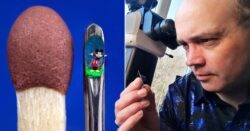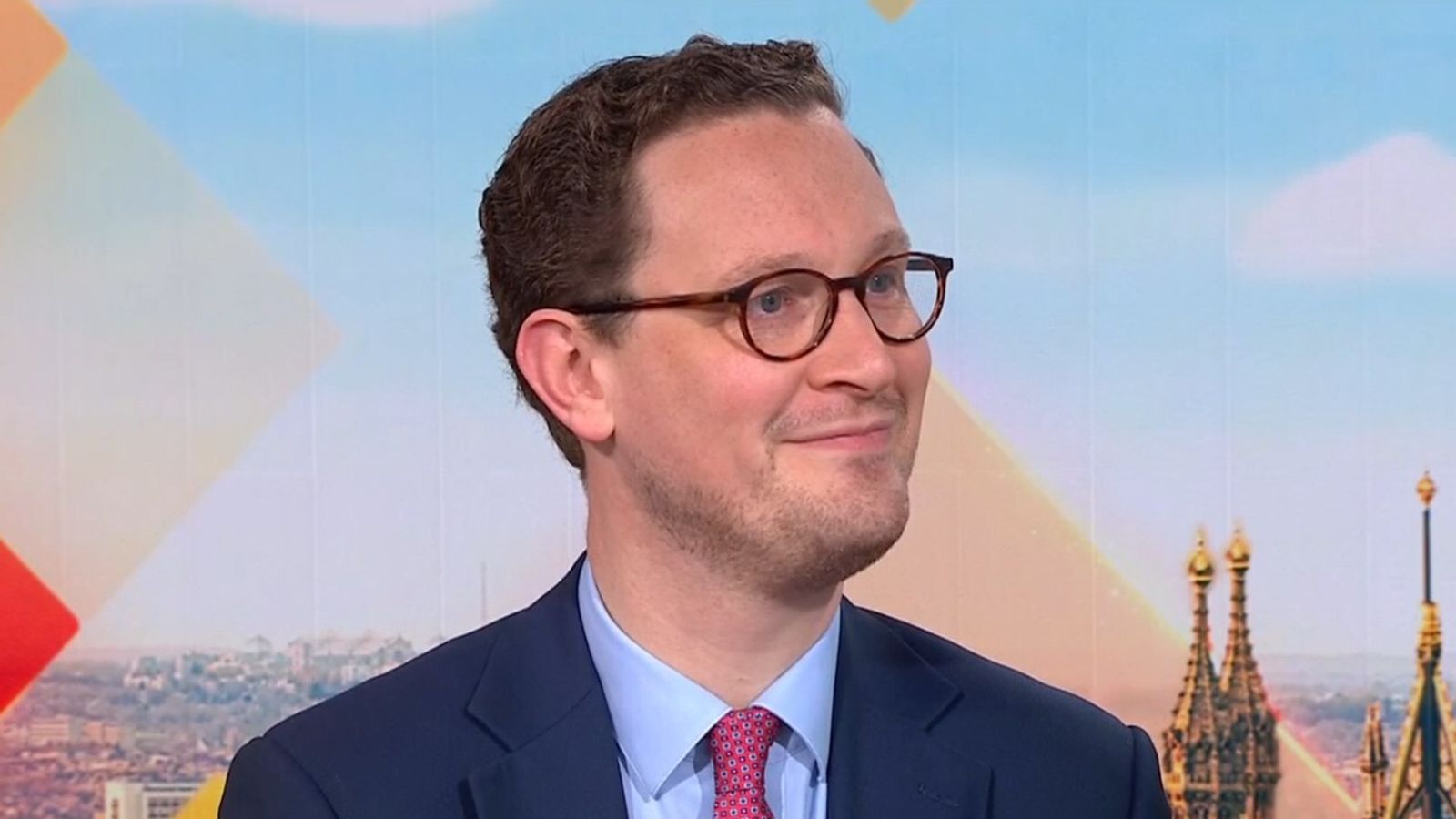David A Lindon gets up close to his microscopic sculpture of Mickey Mouse which he has created for Disney’s 100th anniversary (Picture: David A Lindon/@davidalindon)
Mickey Mouse has been given a microscopic makeover for Disney’s centenary.
The figurine, housed in the eye of a needle, has been painstakingly created by David A Lindon to mark the studio’s creation on October 16, 1923.
The mouse is usually a larger-than-life character but on this occasion magnification is required to appreciate his big-eared glory.
The sculpture, which measures 0.8mm x 1.2mm, even includes Cinderella’s Castle in the backdrop.
It would take 46,666 tiny Mickeys, stood on top of each other, to reach the height of the real castles at the Disney theme parks in Florida and Tokyo.
David, 45, told Metro.co.uk that his micro-creations are a labour of love.
‘I had to make Mickey a couple of times as the first time round I flipped him away accidentally and he landed in my face,’ he said.
‘I think he went into my eye. I rubbed it quickly but when I went and looked in the mirror I couldn’t find him. Micro-art takes a long time to make and it is so small and delicate you need a microscope to see it. It only takes a cough, a sneeze or for someone to open a window and it’s gone.’
The minute cartoon mouse is smaller than a matchstick head (Picture: David A Lindon/@davidalindon)
David works long hours at night when there is less noise and fewer reverberations to disrupt his precision work.
He avoids alcohol as he finds it impairs his concentration and has trained himself to slow down his breathing and keep his heart rate as low as possible to steady his hands. The creator is an engineer by trade who started as an apprentice with the Ministry of Defence, which involved being trained to work on small, complex equipment.
A career change came when he watched a TV show about micro-artists and realised his skill set would be suited to the profession.
David finds his work a labour of love but the reaction from viewers makes it worthwhile (Picture: David A Lindon/@davidalindon)
Working from his home in Bournemouth, he uses materials including Kevlar, carpet fibres, ceramics and even precious metals such as gold and platinum.
There’s no sign of Minnie or Pluto yet — but that might change.
The micro-artist’s aim is to make a collection of Disney characters for an official exhibition, with display equipment giving viewers a close-up look at his work.
Tiny sculptures that light up and rotate 360 degrees are also among his creations.
‘What keeps me going through the long hours is seeing my work finished and the look of wonder and astonishment on people’s faces when they see my art in person for the first time.’ David said.
‘I don’t enjoy doing it, but I get a huge sense of achievement having created something special, despite the many challenges working under such high magnification.’
Mickey Mouse looks delighted at being shrunk down to fit in the eye of a needle (Picture: David A Lindon/@davidalindon)
Walt Disney was a young animator when he secured his first contract, for a series of cartoons called the Alice Comedies, a hundred years ago tomorrow.
The date is recognised as the beginning of the Disney Brothers Cartoon Studio, where Walt and his brother Roy were equal partners.
Walt then came up with Mortimer mouse, with one story being that his wife Lillian hated the name and suggested he changed it to Mickey.
David is a former engineer who found a new calling after watching a TV programme about micro-art (Picture: David A Lindon/@davidalindon)
After the brothers changed their business’s name to Walt Disney Studios, the new character was introduced to the wider world at a test screening of the silent cartoon short Plane Crazy on May 15, 1928.
Monuments to the brothers’ success include the Cinderella Castle, with the first 56-metre tall construction being completed in July 1971 at the Magic Kingdom Park in Florida.
A nearly identical edifice in Tokyo was opened in April 1983.
Disney is celebrating the anniversary with activities including an exhibition at the ExCel London and inviting world-renowned creatives who are fans to raise funds for the Make-A-Wish children’s charity.
To see more of David’s work visit his website and Instagram page
Do you have a story you would like to share? Contact josh.layton@metro.co.uk
David A Lindon needed a second go at making his tiny Mickey after losing the first sculpture in his eye.





